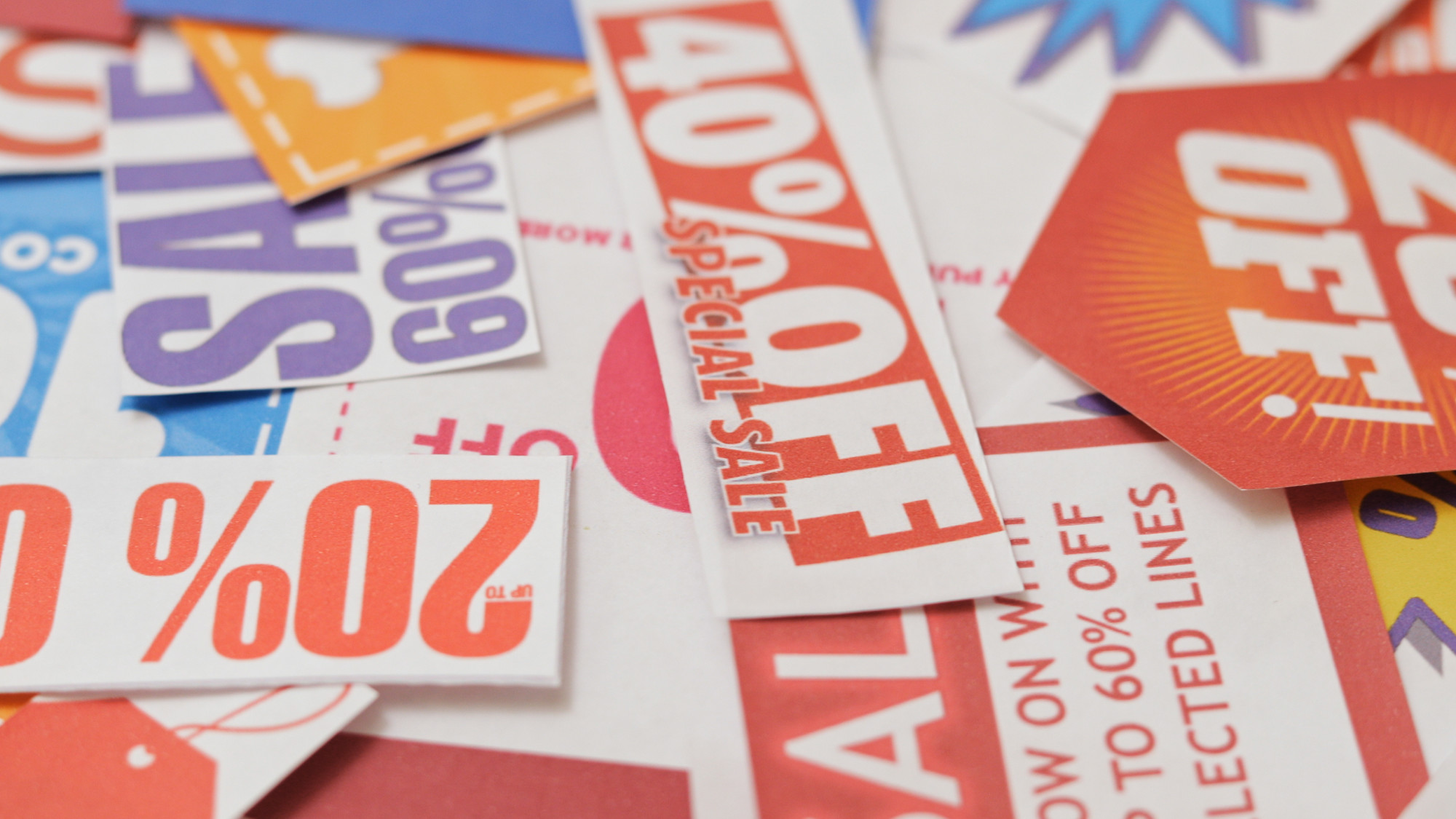Americans spend between $314 and $516 on groceries every month. That amounts to $3,768 – $6,192 a year!
Maybe you were inspired by TLC’s hit TV show, “Extreme Couponing.” Maybe you’re working fewer hours and just trying to stretch a buck.
Or, maybe you just want to reduce your wasteful spending.
Either way, knowing how to extreme coupon can shave tens and even hundreds of dollars off of your expenses. Read on for everything you need to know to get started.
The Basics of Couponing
First, you want to ask yourself how much time and effort you can devote to extreme couponing. The most serious couponers treat it like a second or even a full-time job, but not everyone has that kind of time.
No matter how often you coupon, doing it wisely can still shave a noticeable amount from your grocery expenses. Maybe you end up paying for a full shopping cart. But if you keep a few coupons in your purse or wallet, you can still save a few extra bucks.
But how do you get the most out of your coupons? You’ll need a little more than the flyers you get in the mail or newspaper every week.
For a strategic, organized approach, use the following:
- A computer
- A printer
- A binder with dividers and labels
You might be wondering how a computer and printer factor into your couponing. If you know where to find coupons, you can print them from home and add them to your purchase.
How to Extreme Coupon
Remember to set realistic goals for yourself. In the beginning, you likely won’t pay a few dollars for hundreds of dollars’ worth of goods.
Extreme couponing is an art. It’s not enough to simply use coupons as soon as you find them. You have to find as many of the right coupons as you can and use them at the right time — all while understanding specific store policies.
Start by knowing where to look for coupons.
Where to Find Coupons
Sure, the circulars you get in the mail are a good place to start for extreme couponing. But you can maximize your coupons by also signing up for your local newspaper — better yet, multiple newspapers — for the flyers inside on Sundays.
But subscription fees can add up. Check if your publication offers Sunday-only home delivery. Or, if you don’t want to pay monthly, see if it’s cheaper to make your rounds on Sunday morning, buying single editions of multiple publications.
Sometimes, a monthly subscription costs less than buying one-off issues. But you also have to consider whether your coupon savings will exceed the cost of a subscription.
This is where your computer and printer come in handy: Find coupons online. You can join Facebook groups where people share tips like this Bath and Body Works free shipping trick.
You can also use apps or websites to download and print coupons. Some of these in the U.S. include:
- CouponSurfer
- Coupons.com
- Groupon Coupons
- Grocery Coupon Network
- Valpak
- Savings.com
Lastly, check for store coupon walls or bulletin boards. These are usually found near the entrance. Every month, your stores will also circulate free in-store magazines with coupons. Sign up for any free email newsletters or rewards programs you can find.
And if you’re really feeling bold, use your brand loyalty to your advantage.
Say you buy the same brand of laundry detergent every month, and you really want to let the company know how satisfied you are with the product and why it keeps bringing you back.
Write the company an email — or better, a handwritten letter — praising the company for its quality products. If you catch them in the right mood, they might just reward your compliments with coupons!
How and When to Use Your Coupons
This step is where organization, timing, and store policies come into play.
To organize your coupons, start by saving only the ones you plan to use. For example, you probably won’t need diaper coupons unless you have a baby.
Keep your coupons sorted and organized in a binder with dividers, labels, and pockets. Consider grouping your coupons by category, then arranging them in order of expiration date.
Then, learn your store’s policies inside and out. Some stores may allow coupon stacking, which lets you apply multiple coupons to the same item.
However, these rules may come with stipulations. You might have to stack a manufacturer’s coupon from a newspaper or magazine with a store coupon that you found online.
Another store policy to consider is overage. This happens when the value of your coupons exceed the cost of the product. Some stores might offer cash refunds for overages. Others might apply the overage as store credit to the rest of your purchase.
Remember to ask about price-matching, too. If your store allows you to not only price-match an item but also apply a coupon to it, this is an easy way to get overages.
Lastly, keep an eye out for sales. Saving your coupons until those specific products go on sale can take your discounts to the next level.
Cashback, Rewards, and Bulk Purchases
One of the easiest ways to maximize your savings is by enrolling in your store’s free rewards program. However, make sure to learn the terms and conditions before applying. Some rewards programs can be confused with in-store credit cards.
If you opt for a cashback or rewards credit card, this will require financial responsibility. Only spend what you can pay back, and make your payments on time to protect your credit score.
Some third-party sites offer cashback without the commitment of taking out credit. These might include:
- Ibotta
- Rakuten
- Drop
- Swagbucks
- Rebaid
- Mr. Cashback
- Mr. Rebates
If you’ve joined an online couponing community, this is a great place to seek recommendations for cashback and rewards.
Finally, it can be tempting to stock up on bulk purchases if you qualify for discounts. This is a great way to save on nonperishables, like soaps, detergents, toothbrushes, and some canned and boxed goods.
But remember not to buy in bulk just because of the savings. If your bulk purchase expires before you get the chance to use it all, you might end up wasting more money than you save.
Save Smarter, Shop Smarter
Now you know everything you need about how to extreme coupon!
Remember that the more time and effort you spend on couponing, the greater your savings will be. But even if you coupon casually, these strategies will help your savings add up in the long run.
Looking for more ways to be frugal? Check out our “money matters” section for more ways to take charge of your finances.



